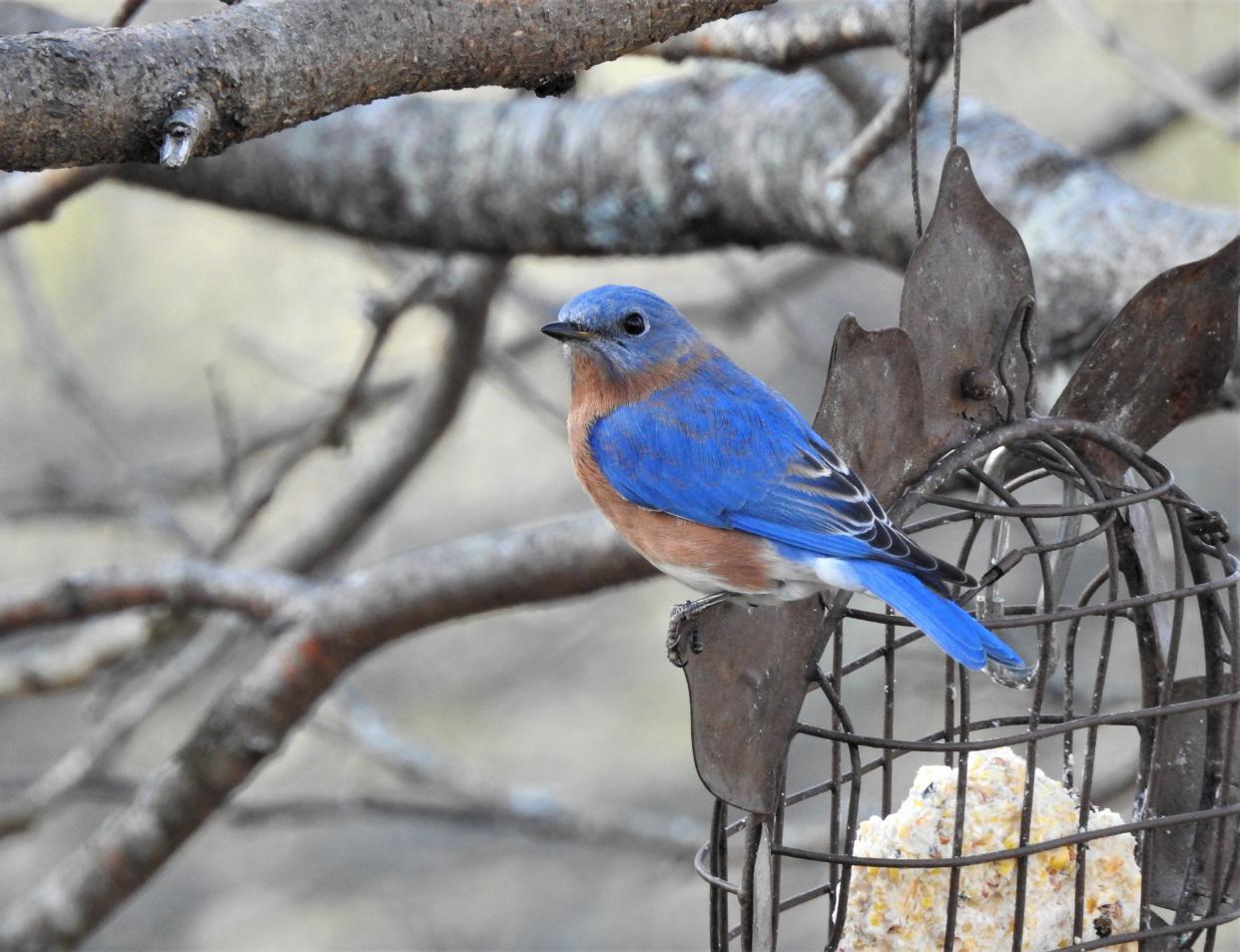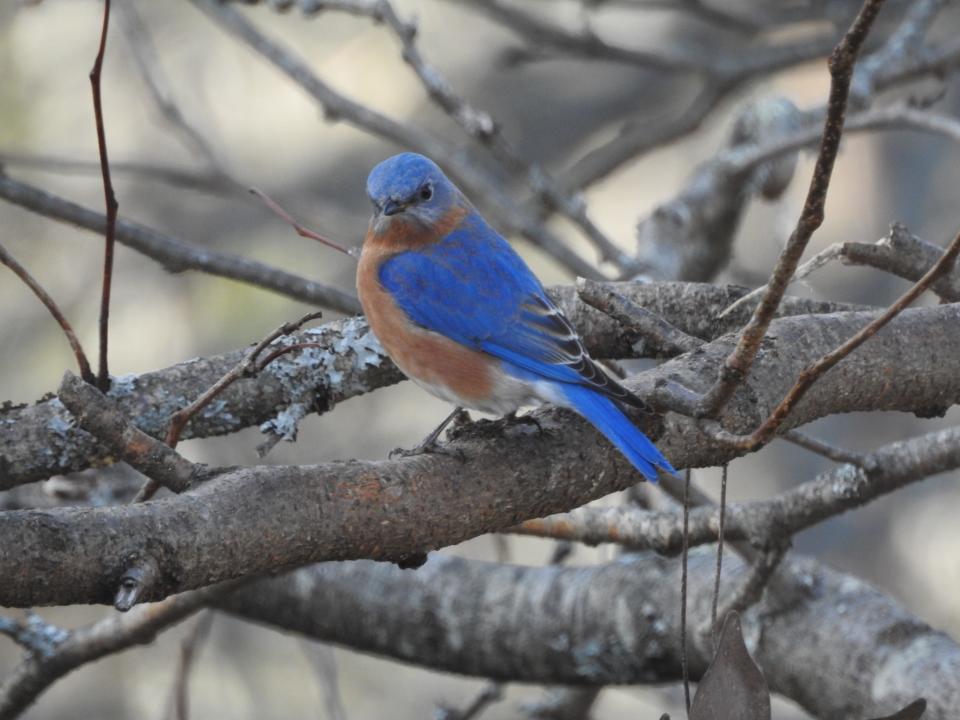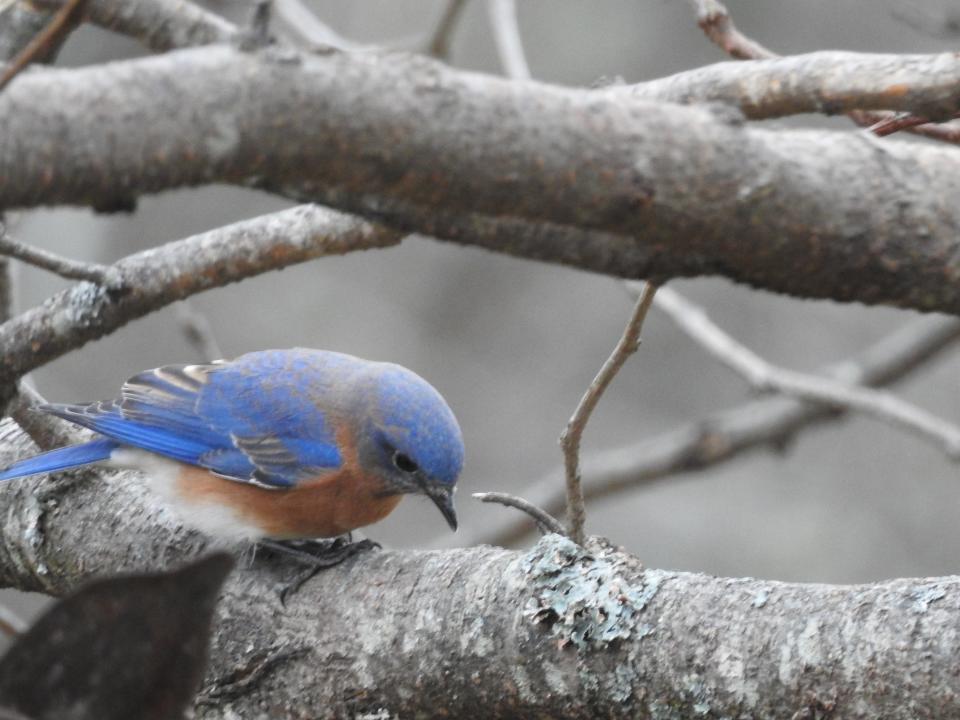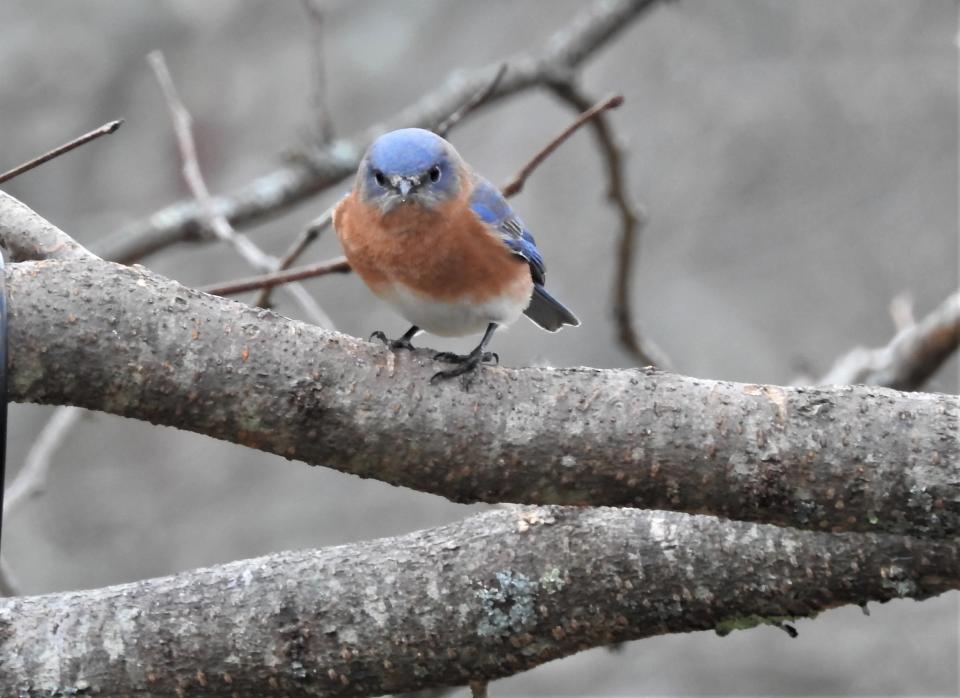Bluebirds aren't really blue. They just look that way to us.

Winter can be, at the landscape level, somewhat monochrome – sweeping vistas of snow, green pine needles and ochre marsh grass peeking through.
But, look closer and there are explosions of color, all the more startling against that monochrome background. Brilliant red teaberries, winterberries, cardinals and the nape of a downy woodpecker's neck, yellow evening grosbeaks, green spruce and fir.
Bluebirds bring blue to the feeder all winter as well as our other local blue bird – the blue jay. In certain light, the blueish-gray backs of the white-breasted nuthatches flash blue at me as they swoop away from the feeder.
Nature News: Gray squirrels are to be enjoyed, not scorned

I was thinking about the color blue in particular because my son has recently started making natural inks out of foraged plants – actually, just one so far – a deep brown ink from pine cones - but is looking forward to summer when a larger variety of plants will be available.
The most difficult color to make is blue - turns out it is rare to find a true blue pigment in plants and animals. From a chemistry standpoint this is evidently a difficult pigment for living things to manufacture, so most things look blue as the result of a variety of cool optical tricks. In the case of animals, when we see blue, it is invariably due to the scattering of light. In the case of plants, blues are most often obtained by mixing other colors or using pH and a variety of chemical processes to modify non-blue pigments.
Sanford: New boardwalk offers close view of rare swamp, a home for endangered butterfly

I’ve found enough blue jay feathers in the forest, picked them up, and twirled them between my fingers to know that blue jay feathers aren’t truly blue ... that it is a trick of the light. When light is shining on them, they look blue; when light is shining through them, they look gray or black. My epiphany for this winter was noticing that the bluebirds at my feeder are the same. They don’t look blue unless light is shining on them.
In the light of a low dawn, even with my camera zoomed to the feathers, there is no blue. But as the sun's long rays top the trees and hit those feathers, the blue becomes dazzling. It turns out that none of the blue birds we see in our woods, in fact no birds on Earth (as far as we know), are blue due to blue pigments. The blue is all due to physics not chemistry, light interacting with structures that act as prisms.

A red male cardinal looks red in dim light and when backlit – the color we see in a cardinal is produced by a red pigment (carotenoid) in the feather that, in cardinals, is actually originally derived from their diet of fruit and seeds. Instead of using pigments, blue birds use the microscopic structure of their feathers to produce color. This is known as structural coloration. Tiny structures built of keratin (the protein that is in hair, fingernails and feathers) and air scatter and amplify blue wavelengths of light back to our eyes. Different sizes and shapes of these keratin and air pockets create the different shades of blue we see in different birds.
Interestingly, scientists have tried to create red colors the same way, and so far can’t, it appears that reds found in birds only come from red pigments.
So far it looks like we will be welcoming in the new year with a fresh coat of snow. For me, one of the joys of this time of year is the snow-covered, wind-lashed monochrome landscape interrupted with tiny flashes of color - the red berry, the blue bird, the green pine needle - that speak to the resilience of nature and hope in the face of adversity.

Susan Pike, a researcher and an environmental sciences and biology teacher at Dover High School, welcomes your ideas for future column topics. She may be reached at spike3116@gmail.com. Read more of her Nature News columns online at Seacoastonline.com and pikes-hikes.com, and follow her on Instagram @pikeshikes.
This article originally appeared on Portsmouth Herald: Nature News: Bluebirds aren't blue, but use structural coloration

